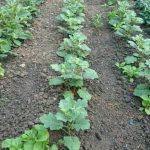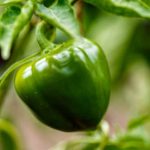Are you tired of spending hours watering your vegetable garden by hand? A drip irrigation kit for vegetable gardens could be the solution you’ve been looking for. This article will explore the benefits of using a drip irrigation system, how to choose the right kit for your garden, and provide a step-by-step guide on setting it up.
Drip irrigation is a method of delivering water directly to the base of plants, minimizing wastage and evaporation. In vegetable gardens, this can result in healthier plants and higher yields. As we delve into the importance of drip irrigation, you’ll discover how it can save you time and effort while promoting efficient water usage.
In addition to discussing the benefits of drip irrigation, we will also explore how to select the right kit for your specific vegetable garden needs. By understanding the different types of kits available and what to look for when making your purchase, you can ensure that your garden receives the optimal level of hydration. So let’s dive into the world of drip irrigation and take your vegetable gardening game to the next level.
Benefits of Using a Drip Irrigation Kit for Vegetable Gardens
Drip irrigation is an efficient and effective way to water vegetable gardens. By using a drip irrigation kit for vegetable gardens, gardeners can experience a range of benefits that can lead to healthier plants and higher yields. One of the key benefits of using a drip irrigation kit is water conservation. Unlike traditional watering methods, such as overhead sprinklers, drip irrigation delivers water directly to the base of the plants, minimizing evaporation and runoff.
Another advantage of using a drip irrigation kit for vegetable gardens is precise control over the amount of water being delivered to each plant. This is especially beneficial for vegetable gardens, as different types of vegetables have varying water needs. With a drip irrigation system, gardeners can customize their watering schedule and ensure that each plant receives the right amount of moisture, leading to healthier and more productive crops.
In addition to water conservation and precise watering control, using a drip irrigation kit in a vegetable garden can also help minimize weed growth. Traditional watering methods often result in moisture reaching areas where it isn’t needed, leading to weed growth.
Drip irrigation delivers water directly to the root zone of plants, reducing the likelihood of weed proliferation. Overall, the use of a drip irrigation kit in vegetable gardens can lead to improved efficiency, better plant health, and ultimately higher yields.
| Benefit | Description |
|---|---|
| Water Conservation | Delivers water directly to the base of plants, minimizing evaporation and runoff |
| Precise Watering Control | Allows customization of watering schedule for different types of vegetables with varying water needs |
| Weed Control | Reduces weed growth by delivering water directly to the root zone of plants |
How to Choose the Right Drip Irrigation Kit for Your Vegetable Garden
When it comes to choosing the right drip irrigation kit for your vegetable garden, there are several factors to consider to ensure that you select the most suitable system for your specific needs. Here are some key points to keep in mind when making this important decision:
- Size of your garden: Consider the size of your vegetable garden as this will determine the type and size of drip irrigation kit you will need. Smaller gardens may only require a simple, straightforward system, while larger gardens may necessitate a more complex setup with multiple lines and emitters.
- Water requirements: Take into account the water needs of your particular vegetables. Some plants require more water than others, so it’s essential to choose a drip irrigation kit that can deliver the appropriate amount of water to each plant.
- Soil type: The type of soil in your vegetable garden can also influence the type of drip irrigation system you should choose. For example, sandy soil will absorb water more quickly than clay soil, which may necessitate a different type of emitter or watering schedule.
Additionally, it’s crucial to consider the quality and durability of the materials used in the drip irrigation kit. Opt for high-quality components that are designed to withstand outdoor conditions and last for many years. Lastly, factor in any additional features or accessories that may be beneficial for your specific vegetable garden, such as a timer or pressure regulator.
By carefully assessing these factors and doing thorough research on different drip irrigation kits available on the market, you can confidently select the right system that will support healthy growth and bountiful harvests in your vegetable garden.
Remember these tips when choosing a drip irrigation kit for vegetable gardens:
- Consider the size and layout of your garden
- Take into account water requirements and soil type
- Look for high-quality materials and consider additional features
Step-by-Step Guide on Setting Up a Drip Irrigation System for Your Vegetable Garden
Setting up a drip irrigation system for your vegetable garden is a relatively simple and straightforward process. By following these step-by-step instructions, you can ensure that your plants receive the right amount of water at the right time, leading to healthier and more bountiful crops.
To begin setting up your drip irrigation system, you will need to gather the necessary materials and tools. These may include a drip irrigation kit for vegetable gardens, tubing, emitters, stakes, connectors, and a timer. Once you have all the components required for your specific garden size and layout, you can move on to the next steps.
Here is a step-by-step guide on how to set up a drip irrigation system for your vegetable garden:
1. Plan Out Your Garden Layout:
Before installing the drip irrigation system, it’s important to plan out your garden layout to ensure that all areas are covered by the system. Make note of where each type of vegetable is planted so that you can determine where the tubing and emitters should be placed.
2. Install Main Water Line:
Connect the main water line from your outdoor faucet or water source to one end of your garden area where you plan to start the irrigation system. Use connectors as needed to adapt to different sizes of tubing or to split off into different lines for various sections of your garden.
3. Lay Down Tubing and Emitters:
Lay out the tubing along each row of vegetables in your garden, making sure to secure it in place with stakes as needed. Attach emitters at regular intervals along the tubing so that each plant receives an adequate amount of water.
By following these steps and properly setting up a drip irrigation system using a reliable drip irrigation kit for vegetable gardens, you can efficiently and effectively water your vegetable garden while conserving water and promoting healthy plant growth. With this setup in place, you can enjoy a thriving garden throughout the growing season.
Maintenance Tips for Drip Irrigation Kits in Vegetable Gardens
Regular Inspection and Cleaning
To ensure the effectiveness of your drip irrigation system in your vegetable garden, regular inspection and cleaning are essential. Over time, debris, mineral buildup, and algae can clog the emitters and hoses, affecting the water flow to your plants. It is recommended to inspect the system at least once a month and clean any clogged emitters or hoses. Use a mild detergent solution to remove algae and mineral deposits.
Check for Leaks
Leaks in a drip irrigation system can lead to water wastage and uneven distribution of water to your vegetable plants. Inspect the connections, hoses, and emitters for any signs of leakage. Replace any damaged components immediately to prevent water loss and ensure that all your plants receive the necessary hydration.
Adjusting Water Flow
As your vegetable garden grows and changes, you may need to adjust the water flow in your drip irrigation system accordingly. Plants with different watering needs may require more or less water than others. Monitoring the soil moisture levels and adjusting the water flow will help ensure that each vegetable plant receives just the right amount of water it needs for healthy growth.
By following these maintenance tips for your drip irrigation kit for vegetable gardens, you can ensure that your system continues to function optimally, providing efficient watering for your thriving vegetable garden.
Common Mistakes to Avoid When Using Drip Irrigation in Vegetable Gardens
When using a drip irrigation kit for vegetable gardens, it’s important to be mindful of common mistakes that can impact the effectiveness of the system. One common mistake is not checking for leaks regularly. Even small leaks in the tubing or connectors can lead to water waste and uneven watering of your vegetable garden. It’s important to inspect your drip irrigation system on a regular basis to ensure that all components are functioning properly.
Another mistake to avoid is improper spacing of the drip emitters. If the emitters are placed too far apart, some areas of your vegetable garden may not receive enough water, while placing them too close together can result in overwatering and potentially waterlogging the soil. Understanding the water needs of your specific vegetables and adjusting the spacing of emitters accordingly is crucial for successful drip irrigation.
Furthermore, failing to flush the system on a regular basis can lead to clogging of the tubing and emitters. Over time, mineral deposits and debris can build up within the system, affecting water flow and distribution. Regularly flushing out your drip irrigation kit for vegetable gardens will help maintain optimal performance and prevent potential issues.
Success Stories
Increased Yield and Quality
Many vegetable gardeners have reported significant increases in their yield and quality of produce after implementing a drip irrigation system. By providing a consistent supply of water directly to the roots, plants are able to absorb moisture more efficiently, leading to healthier and more abundant crops. This has been particularly beneficial for vegetables that are sensitive to overwatering or underwatering, such as tomatoes, peppers, and lettuce.
Water Conservation
One remarkable success story comes from a vegetable gardener who was able to reduce water usage by up to 50% after switching to a drip irrigation kit for their garden. The targeted application of water directly to the root zone minimizes evaporation and runoff, resulting in significant water savings. This not only benefits the environment but also helps reduce water bills for the gardener.
Time-Saving Benefits
Another inspiring success story involves a busy working professional who used to struggle with finding the time to water their vegetable garden regularly. After installing a drip irrigation system, they were able to automate the watering process, freeing up valuable time while still maintaining a healthy and thriving garden. This convenience has allowed them to continue enjoying gardening without feeling overwhelmed by the demands of manual watering.
These success stories demonstrate the positive impact of using a drip irrigation kit for vegetable gardens. From increased yield and quality of produce, to water conservation and time-saving benefits, the real-life examples serve as inspiration for other vegetable gardeners looking to improve their gardening experience through efficient watering methods.
Conclusion
In conclusion, it is evident that the use of a drip irrigation kit for vegetable gardens is not only beneficial but essential for the future of successful gardening. As we continue to face challenges such as water conservation and efficient resource management, drip irrigation presents itself as a sustainable solution for maintaining healthy and thriving vegetable gardens.
By providing the right amount of water directly to the roots of plants, this method not only saves water but also reduces weed growth and minimizes soil erosion.
The success stories shared by avid gardeners who have adopted drip irrigation systems further emphasize the positive impact of this technology on vegetable gardens. From increased yields to healthier plants, the benefits are clear and undeniable. It is inspiring to see how individuals have leveraged these kits to transform their gardening experience.
As we look ahead, it is important for both seasoned gardeners and beginners to consider implementing a drip irrigation system in their vegetable gardens. With proper maintenance and attention, these kits have the potential to revolutionize the way we approach gardening. Whether you are growing vegetables for personal consumption or commercial purposes, investing in a quality drip irrigation kit will undoubtedly set you on a path towards sustainable and prosperous gardening practices.
Frequently Asked Questions
Is Drip Irrigation Good for Vegetables?
Drip irrigation is great for vegetables because it delivers water directly to the base of the plants, reducing water waste and minimizing disease issues. It also helps with consistent moisture levels, which is crucial for vegetable growth.
What Is the Best Type of Irrigation for a Vegetable Garden?
The best type of irrigation for a vegetable garden is generally drip irrigation. This method provides targeted watering, reduces weed growth, and minimizes soil erosion. Soaker hoses or micro-sprinklers can also work well in certain situations.
What Size Drip Emitters to Use for Vegetable Garden?
The size of drip emitters to use for a vegetable garden depends on various factors such as soil type, plant water requirements, and local climate. In general, smaller emitters are better suited for vegetables with lower water needs, while larger emitters may be needed for plants with higher water needs like tomatoes or peppers.

If you’re looking to get into vegetable gardening, or are just looking for some tips on how to make your current garden better, then you’ve come to the right place! My name is Ethel and I have been gardening for years. In this blog, I’m going to share with you some of my best tips on how to create a successful vegetable garden.





